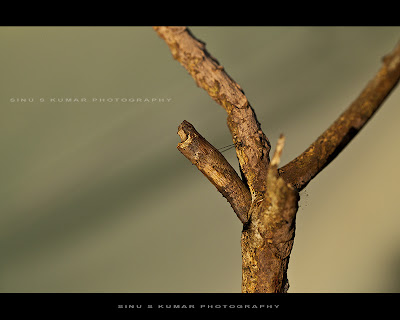 |
| Butterfly Pupa |
When the larva exceeds a minimum weight at a particular time of day it will stop feeding and begin "wandering" in search of a suitable pupation site, usually the underside of a leaf. The larva transforms into a pupa (chrysalis), which then transforms into a butterfly by metamorphosis. To transform from the miniature wings visible on the outside of the pupa into large structures usable for flight, the pupal wings undergo rapid mitosis and absorb a great deal of nutrients. If one wing is surgically removed early on, the other three will grow to a larger size. In the pupa the wing forms a structure that becomes compressed from top to bottom and pleated from proximal to distal ends as it grows, so that it can rapidly be unfolded to its full adult size. Several boundaries seen in the adult color pattern are marked by changes in the expression of particular transcription factors in the early pupa.
 |
| Butterfly Pupa |
The pupa of a butterfly is known as chrysalis a term derived from the Greek word khrusos for gold, since a number of butterfly pupae, especially the Nymphalidae have metallic golden markings. The pupal stage is considered as the resting stage. But all transformations for the adult stage are taking place inside the pupa. Hence all the adult organs can be identified in it . but all these structures are firmly glued down to the surface. The abdomen is discernible with 10 segments and at the posterior end, there are generally a number of hooks forming a structure called the cremaster. This is used for the attachment of the pupa to the substrate. Pupa being immobile, is particularly vulnerable to attack by predators. Hence pupation frequently proceeds within a silken cocoon, of hollow of earth or leaf roll as in hesperiidae and some satyridae. The naked pupae are protectively coloured. Such naked puape may hang head – downwards by the cremaster ( tail hooks ) without any other support as in the Danaidae, most of the Satyridae and the Nymphalidae. They may also be attached by the cremaster but supported head- upwards by a silken girdle as in the Lycaenidae, Papilionidae and Pieridae. In both cases, the larva spins a little silken pad into which the hooks of cremaster are firmly embedded. They amy also gain protection by merging into the background and some are able to change their colour to match the surface on which they are resting. Others resemble dead leaves or pieces of twig and the poisonous pupae are usually conspicuous and brightly coloured. Normally the pupae are green or brown.
Adult butterfly emerges from the pupa in about 7 – 15 days. Adults emerge mostly during early morning hours. Adult crawls out by splitting open the pupal case on the back and perch on a suitable place. Immediately after emergence, wings are wrinkled and shriveled and they attain the normal shape soon. The wings get hardened after exposure to the sun. all these actions will be over within an hour. Then the fully opened butterfly will flutter out to find food and mate. At this point, the uric acid accumulated during the pupal period is eliminated in the form of a liquid, meconium, frequently yellow or pink or red. In some parts of the world, numerous drops of meconium sometimes produced following the mass emergence of certain species has given rise to such popular belief as the rain of blood.
Adult butterfly emerges from the pupa in about 7 – 15 days. Adults emerge mostly during early morning hours. Adult crawls out by splitting open the pupal case on the back and perch on a suitable place. Immediately after emergence, wings are wrinkled and shriveled and they attain the normal shape soon. The wings get hardened after exposure to the sun. all these actions will be over within an hour. Then the fully opened butterfly will flutter out to find food and mate. At this point, the uric acid accumulated during the pupal period is eliminated in the form of a liquid, meconium, frequently yellow or pink or red. In some parts of the world, numerous drops of meconium sometimes produced following the mass emergence of certain species has given rise to such popular belief as the rain of blood.








1 comment:
These are wonderful pictures! Can you tell me which species of butterfly these are? I am doing an educational lesson on the camouflage of butterfly pupa and this would be very helpful.
Thank you!
Post a Comment